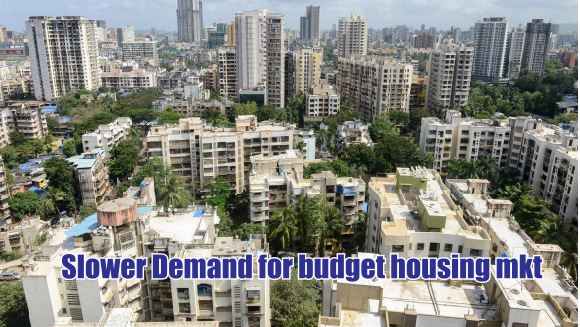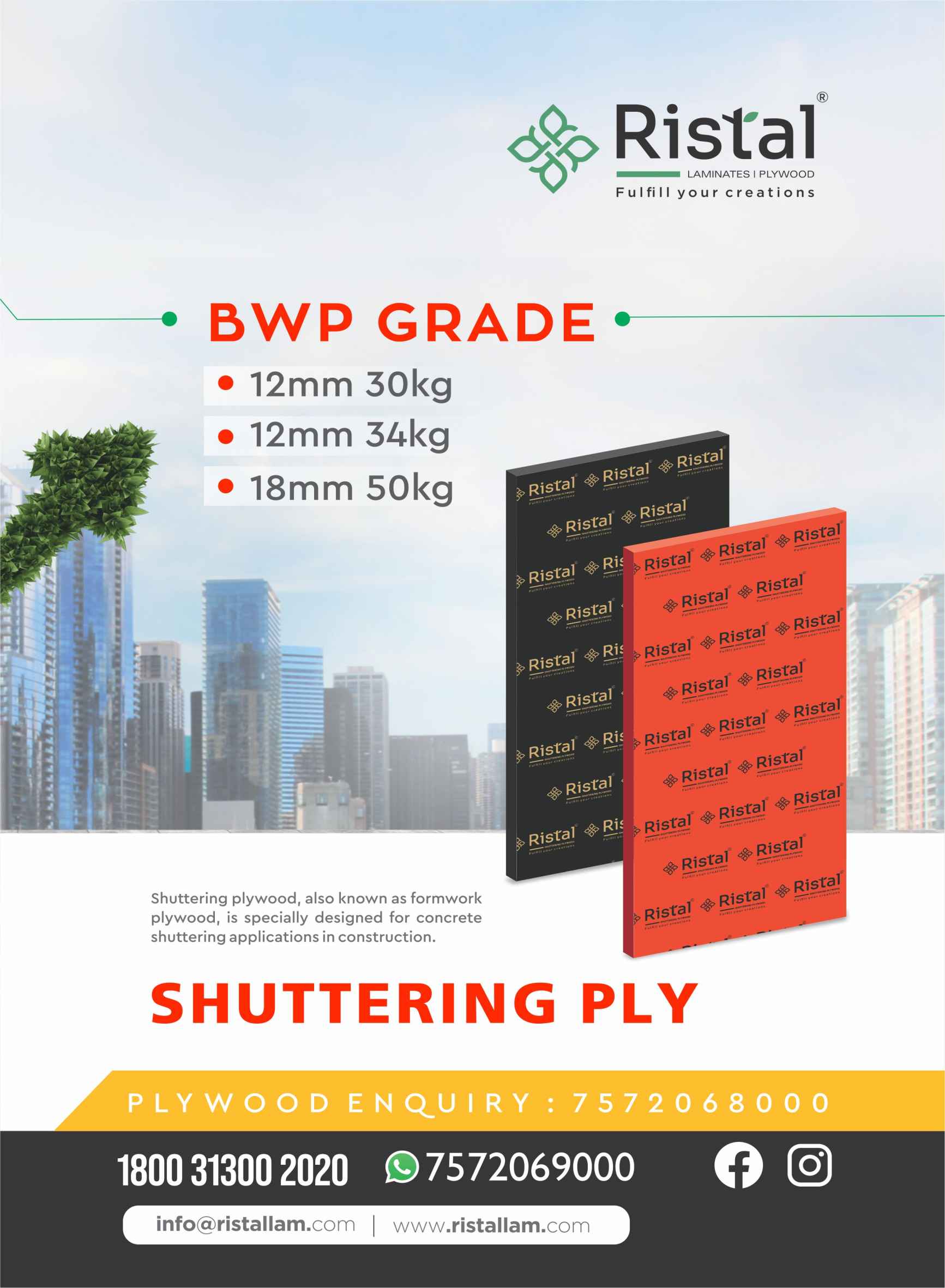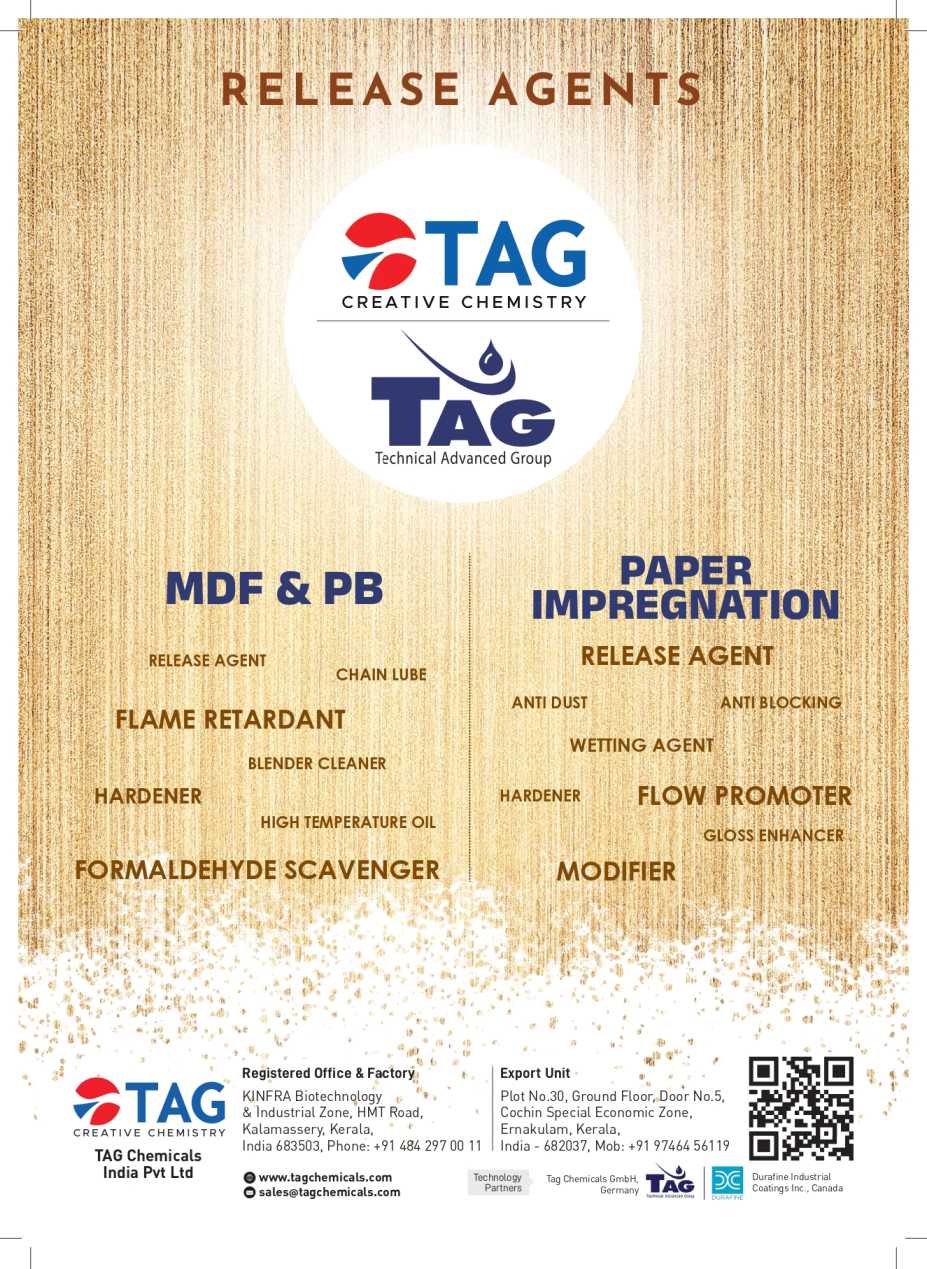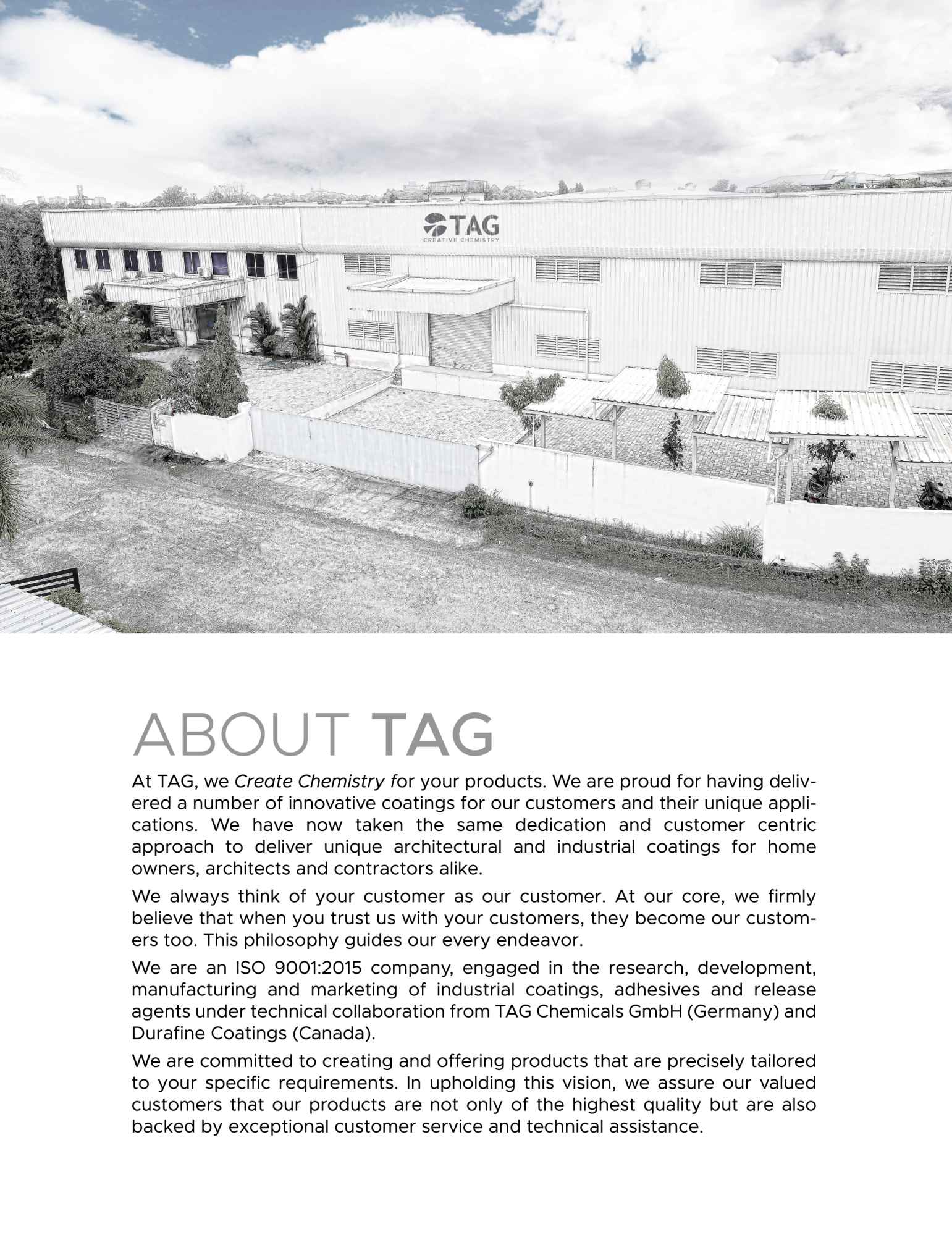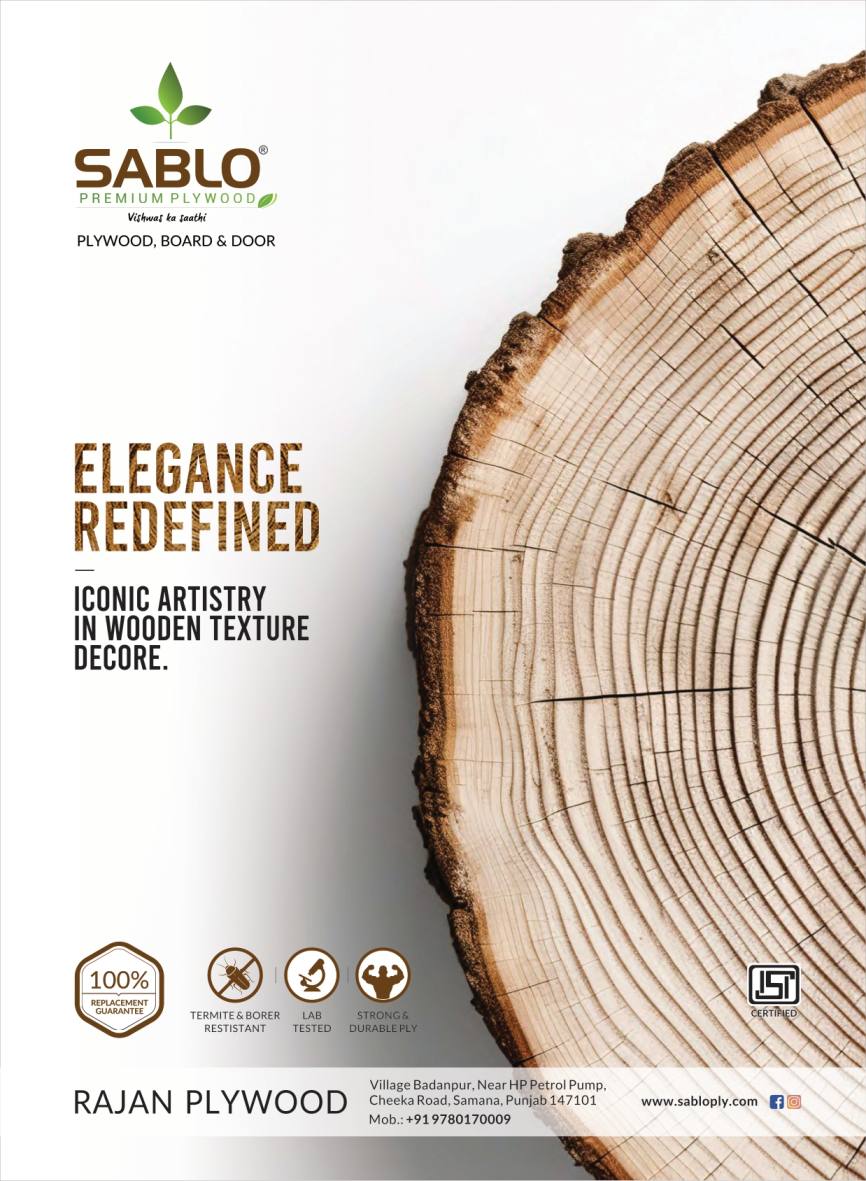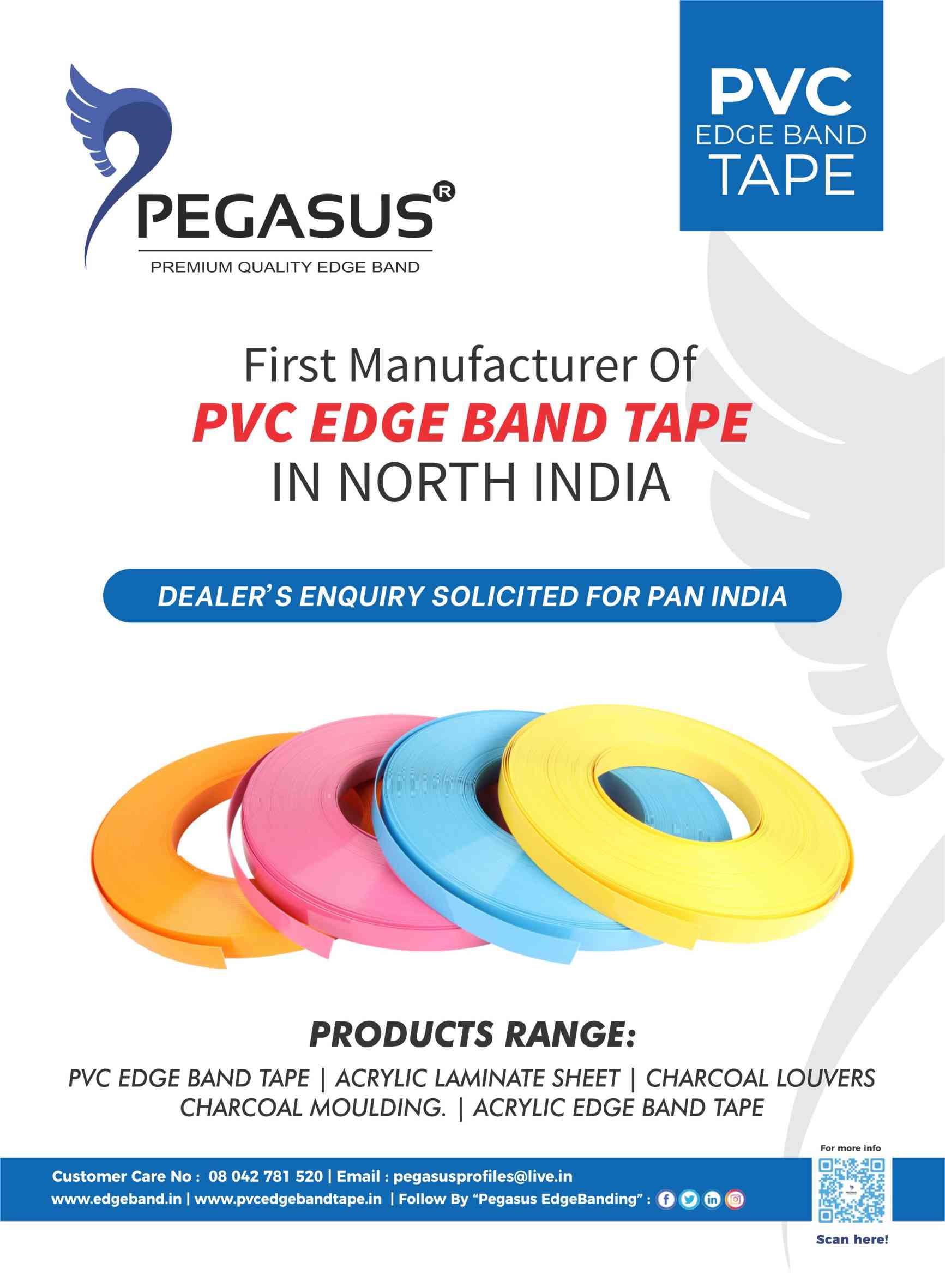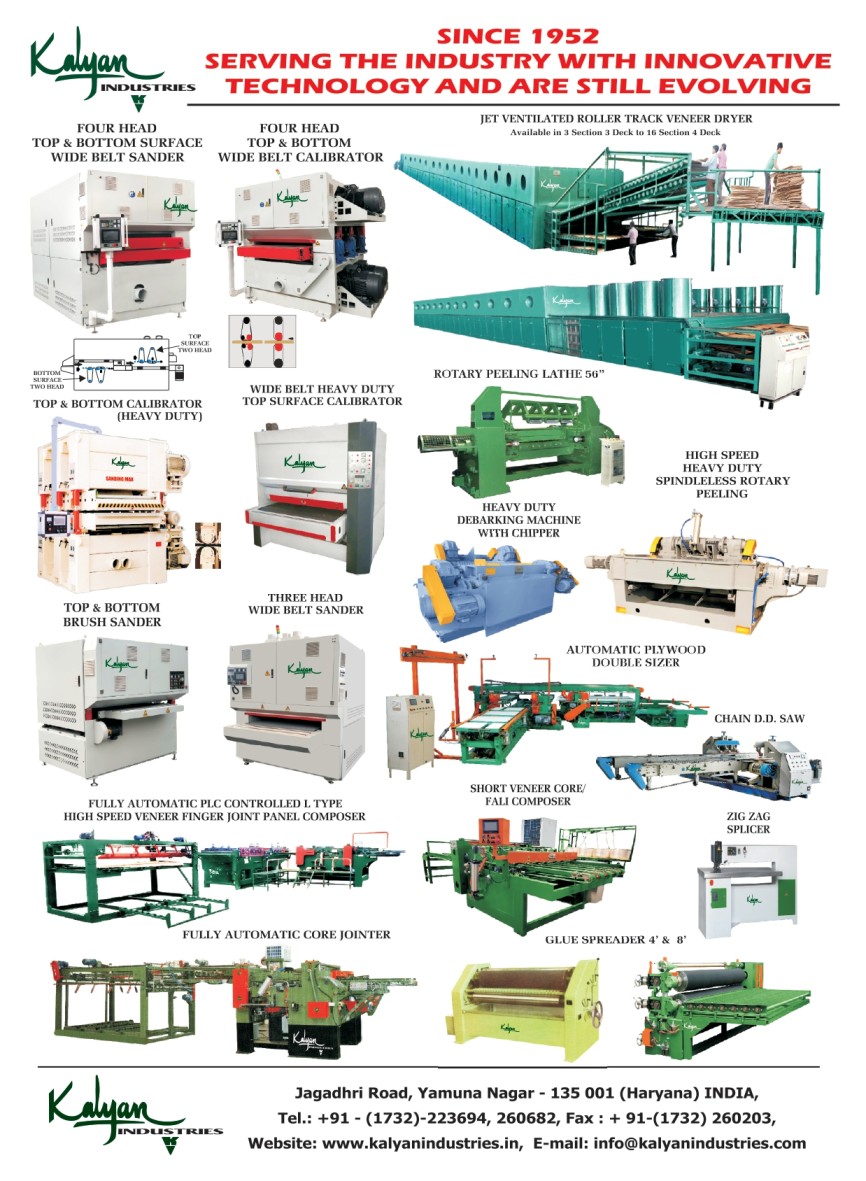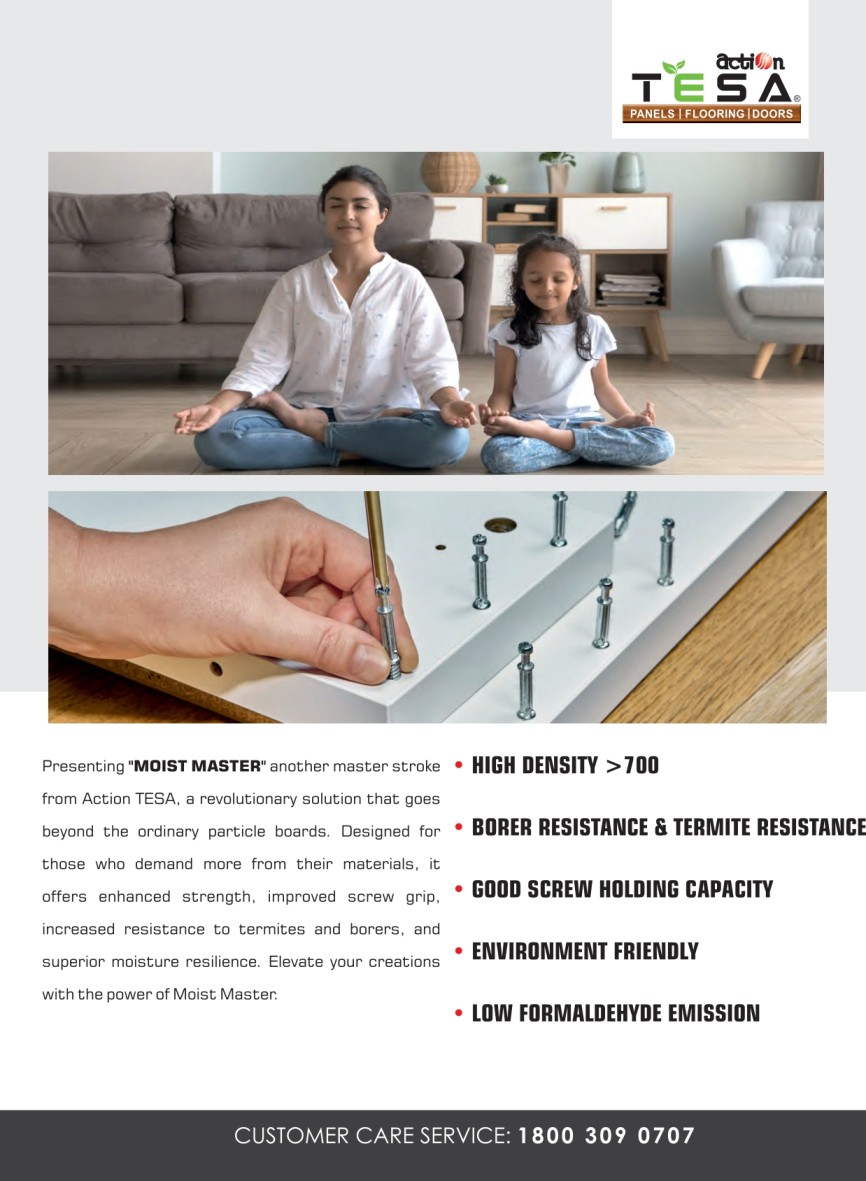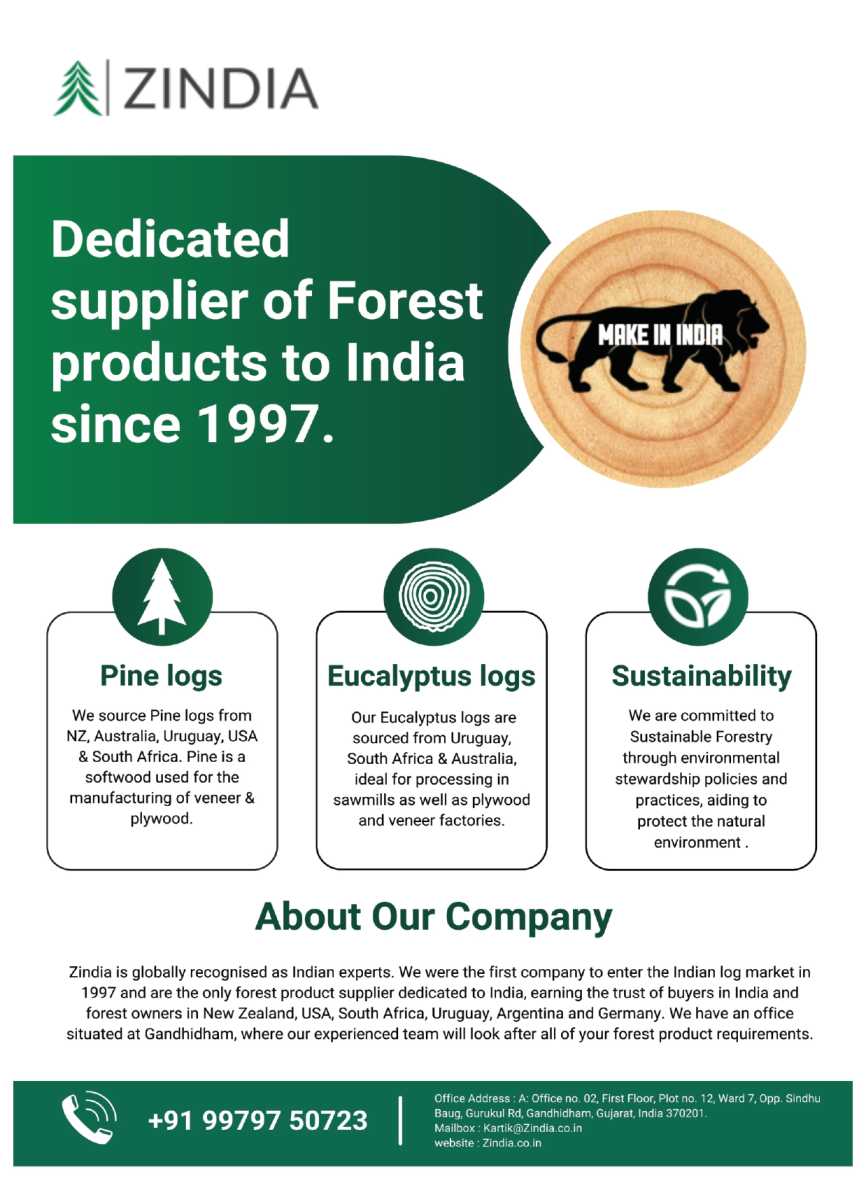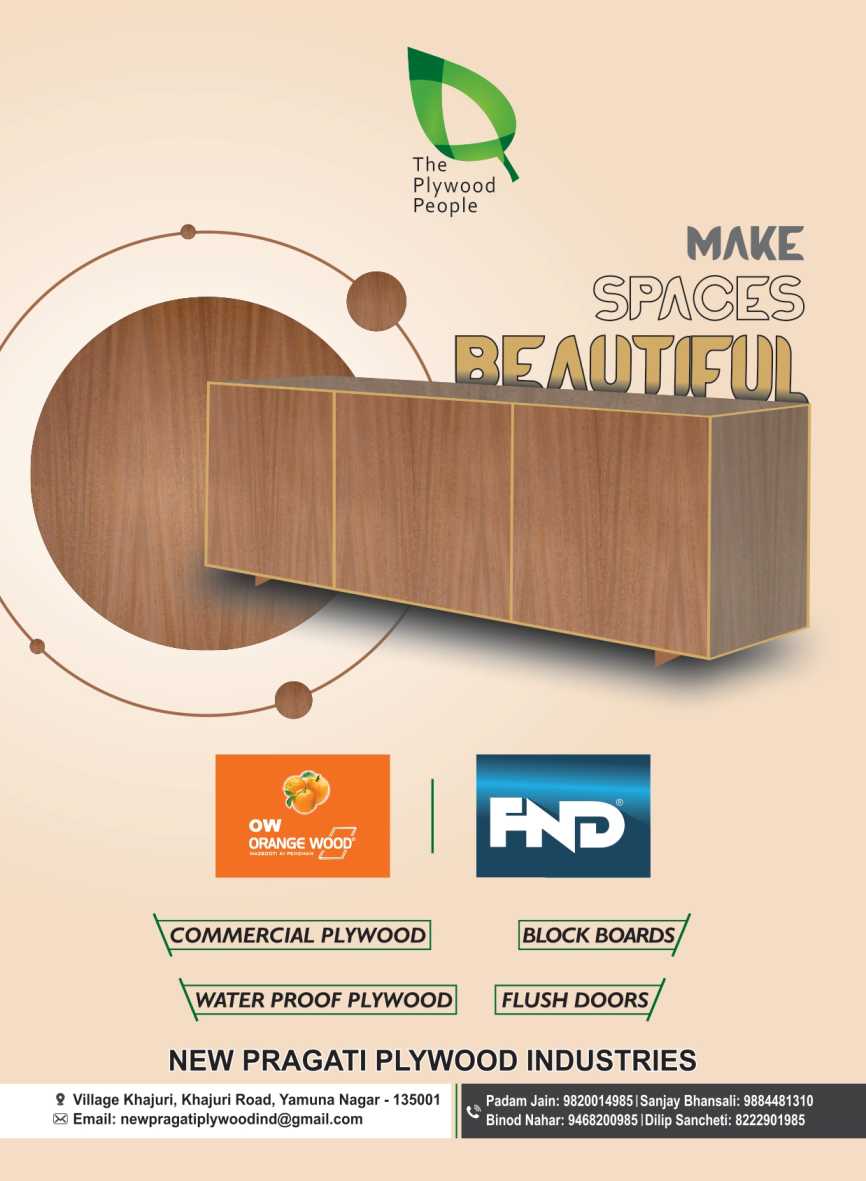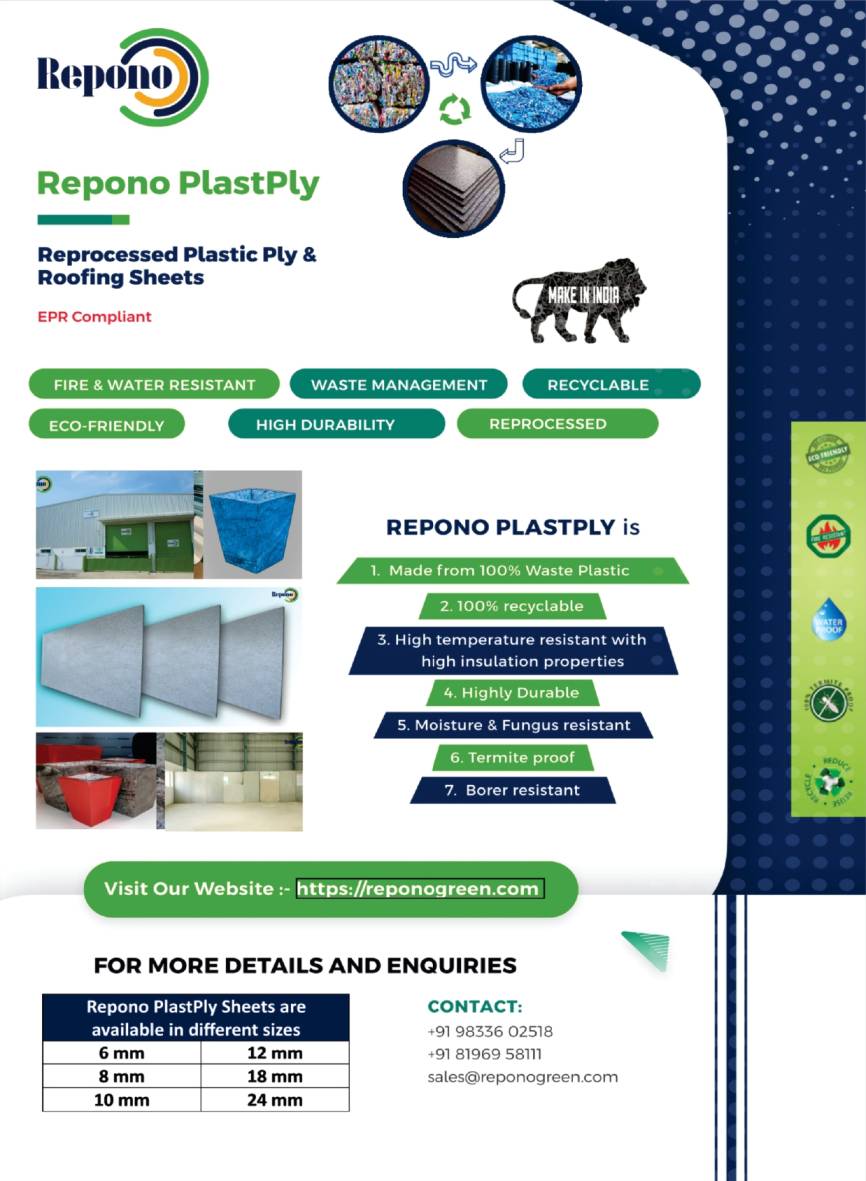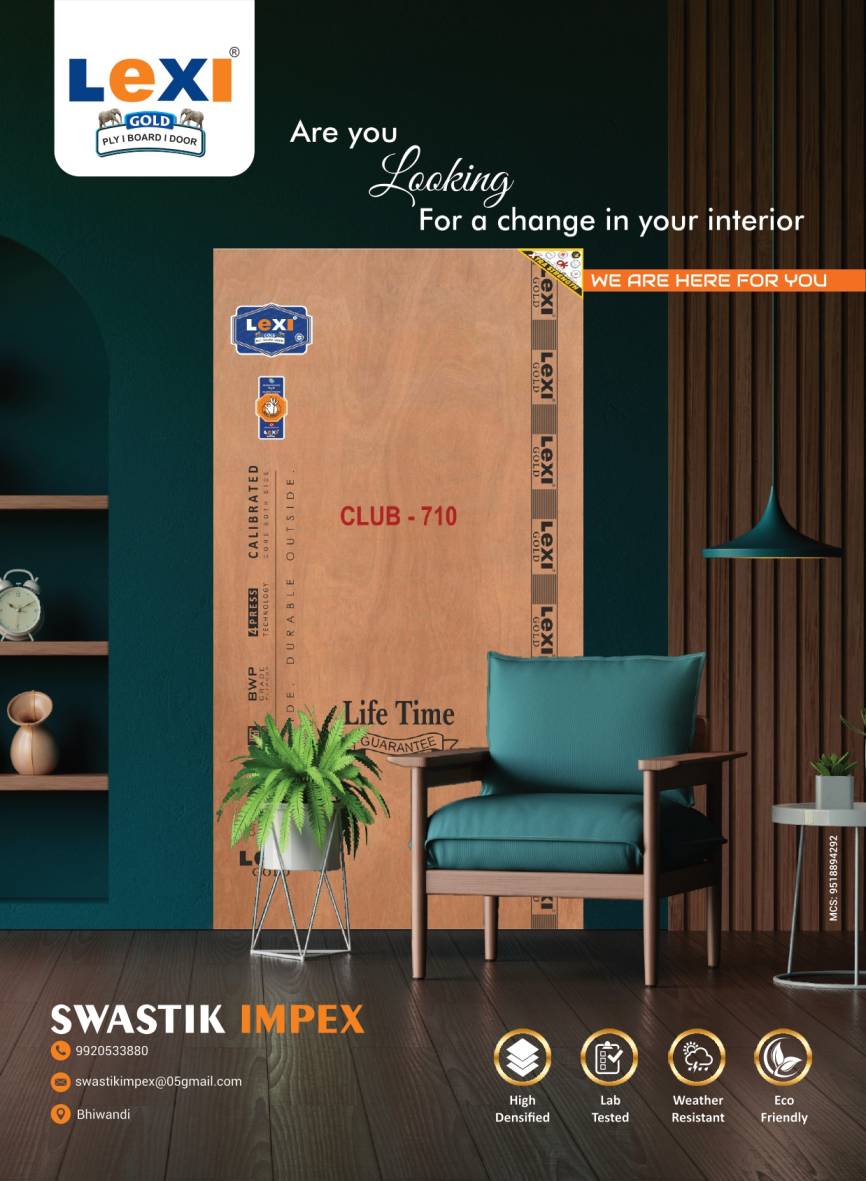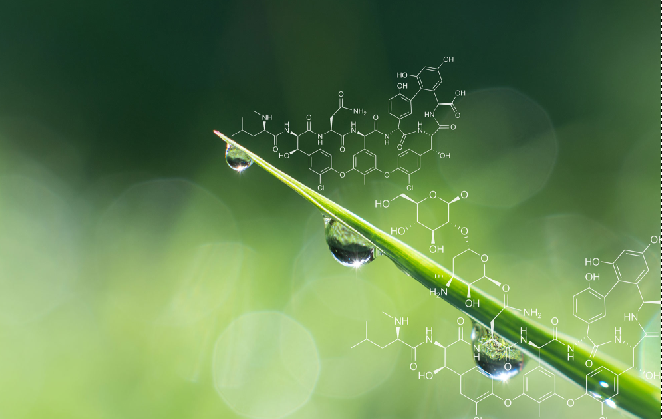
Using bio-resins as an eco-friendly alternative to adhesives in plywood and laminates
- August 31, 2021
- 0
Plywood is one of the most widely used materials for furniture and home interiors in India. According to the IMARC Group, the plywood market in India reached a value of `222.5 billion in 2020 and is expected to grow at a CAGR of 4.3% from 2021-2026, driven by growth in the construction sector and the home furnishing industry, where wood-based designs are increasingly becoming popular for their aesthetic beauty as well as sustainability. Plywood is one of the most sustainable building materials available today. Its sustainability quotient can be improved further if we simply replace the adhesives used in its manufacture with eco-friendly alternatives.
PF resins used in plywood are detrimental to human and environmental health.
Plywood, as we know, consists of thin sheets of wood held together with adhesive. Manufacturers use phenol formaldehyde (PF) resins as adhesives to give it structural strength and moisture-resistance. However, formaldehyde is toxic by inhalation, ingestion, and contact with the skin or eyes. It is also counted among probable human carcinogens. The phenol used in in PF resins, too, is toxic when inhaled, and can burn human skin if it comes in direct contact with it.
The use of PF resins also contributes to issues with the disposal of plywood and plywood products, as it reduces the much-needed bacterial action in waste dumps, thereby making it unsuitable for organic decomposition. And, although plywood has considerable calorific value, burning it releases harmful organic pollutants into the environment. The disposal of plywood, therefore, requires specialized arrangements, which are not available in the commonly followed waste management solutions.
Bio-resins are a completely safe, eco-friendly substitute for PF adhesives.
The sustainability of plywood would be greatly enhanced, and its disposal made easier, if the PF adhesive used in its manufacture were to be bio-based. In India, research institutes such as the Indian Plywood Industries Research and Training Institute (IPIRTI) have been trying to develop alternative solutions to PF resins for several years. One such alternative, a bio-resin derived from lignin, is also currently being developed by Fortum. The vast scale of the plywood industry will ensure that even replacing a single manufacturing component – the adhesive, in this case – with an eco-friendly alternative will have a huge positive impact on the environment.
Plywood fits nicely into the growing demand for green homes and interiors.
Meanwhile, there is growing momentum for green buildings and green architecture across the world. Reducing the carbon footprint of buildings and construction processes is no longer merely desirable but necessary. The smart cities of the future will have to be built on green designs that ensure environment-friendly and energy- efficient use of resources. Using bio-resins in plywood can help in the meeting the “green” goals to a considerable degree.
Consumers, too, are becoming increasingly eco-conscious and are showing a pronounced inclination towards green homes. The Covid-19 pandemic has strengthened the overall awareness about the correlation between a healthy environment and a healthy life. Sustainable architecture firms are getting encouraging numbers of enquiries from people who either want to buy a green home or are redoing their old home into an eco-friendly one. India is presently among the largest markets in the world for green buildings. However, according to the International Finance Corporation, only about 5 percent of India’s buildings are green. This points to a huge opportunity for developers, architects, and interior designers to take “green” from a being a niche phenomenon to a mainstream one.
Nordic countries, which have large numbers of wooden buildings and homes, are among the world leaders in sustainable construction and design. In Sweden, sustainable construction initiatives are often undertaken at the municipal level. Stockholm and Gothenburg, for instance, have their own guidelines for the chemicals used in buildings. Finland, meanwhile, has a non-mandatory emission classification of building materials that encourages the development and use of low-emitting building materials. This classification does not, in any way, overrule official building codes. Elsewhere, Norway had introduced a long-term program, under which it documented carbon emissions attributable to the materials used in construction. Unsurprisingly, these countries have achieved some of the best results in reducing carbon footprint and emissions from construction activities.
Meanwhile, in India, green ratings and certification organizations such as Indian Green Building Council (IGBC), GBCI (Green Business Certification Inc), GRIHA (Green Rating for Integrated Habitat Assessment) and LEED (Leadership in Energy and Environmental Design) are working to elevate awareness, encourage best practices and create standards for green buildings that not only benefit the environment and the economy, but also ensure the well-being of people. We would do well to look to Nordic countries for ideas and programs that can be replicated, or suitably modified for implementation, in India.
The need of the hour is to think “green” and use bio-based solutions in building and construction processes, wherever possible. We cannot sit back and expect actions to be taken at regulatory level for determining the pathway towards sustainability. The onus is equally on the industry, which, after all, possesses all the necessary capabilities and resources for driving innovation in this space. All it needs is the willingness to prioritize long- term sustainability goals over short-term business gains. Switching to a bio-based resin in place of the conventional PF resins in plywood is one of the easiest ways in which to make a big difference. It is the least we can do.
Fortum has made its first step in India by investingin a first commercial biorefinery in India. The plant will use bamboo as raw material, and it will produce bioethanol, biochemicals and excess electricity. In the long run, we want to minimise biomass-based energy production and focus on high-value products. Fortum signed a Memorandum of Understanding (MoU) in order to research paddy and paddy straw together with one of India’s leading universities, Chaudhary Charan Singh Haryana Agricultural University. The goal of the cooperation is to produce straw-based textile fiber, as well as other valuable chemicals and materials used in the food, cosmetics and construction industries, among other things. The longer-term aim is to establish a biorefinery using paddy straw as raw material.
एडहेसिव के विकल्प के रूप में बायो-रेजिन का उपयोग: पर्यावरण के अधिक अनुकूल
प्लाईवुड भारत में फर्नीचर और घर के अंदरूनी हिस्सों के लिए सबसे व्यापक रूप से उपयोग की जाने वाली सामग्रियों में से एक है। IMARC समूह के अनुसार, भारत में प्लाईवुड बाजार 2020 में 222.5 बिलियन रुपये तक पहुंच गया थी और 2021-2026 तक 4.3 प्रतिशत की सीएजीआर से उसके बढ़ने की उम्मीद है। यह वृद्धि निर्माण क्षेत्र और होम फर्निशिंग उद्योग मं वृद्धि से प्रेरित है, जहां लकड़ी पर आधारित डिजाइन उनकी सुंदरता के साथ-साथ स्थायित्व के लिए तेजी से लोकप्रिय हो रहे हैं।
प्लाइवुड आज उपलब्ध सबसे टिकाऊ निर्माण सामग्री में से एक है। अगर हम इसके निर्माण में इस्तेमाल होने वाले एडहेसिव को पर्यावरण के अनुकूल विकल्पों से बदल दें तो इसके स्थायित्व में और सुधार किया जा सकता है।
प्लाईवुड में प्रयुक्त पीएफ रेजिन मानव और पर्यावरणीय स्वास्थ्य के लिए हानिकारक हैं।
प्लाइवुड, जैसा कि हम जानते हैं, लकड़ी की पतली चादरों से बनी होती है जो ग्लू से जोड़ी जाती है। निर्माता फिनोल फॉर्मलाडेहाइड (पीएफ) रेजिन को ग्लू के रूप में उपयोग करते हैं ताकि इस संरचनात्मक ताकत और नमी-प्रतिरोध दिया जा सके। हालांकि, फॉर्मलाडेहाइड, श्वास, त्वचा या आंखों के संपर्क में आने पर विषाक्त करता है। इसे संभावित मानव कैंसर के कारकों में भी गिना जाता है। पीएफ रेजिन में इस्तेमाल होने वाला फिनोल भी सांस लेने पर जहरीला होता है, और इसके सीधे संपर्क में आने पर मानव त्वचा जल सकती है।
पीएफ रेजिन का उपयोग प्लाईवुड और प्लाईवुड उत्पादों के निपटान के मुद्दों में भी योगदान देता है, क्योंकि यह कचरे के ढेर में बहुत आवश्यक जीवाणु क्रिया को कम करता है, जिससे यह कार्बनिक अपघटन के लिए अनुपयुक्त हो जाता है। और, हालांकि प्लाईवुड का काफी कैलोरी मान होता है, लेकिन इसे जलाने से पर्यावरण में हानिकारक कार्बनिक प्रदूषक निकलते हैं। इसलिए, प्लाईवुड के निपटान के लिए विशेष व्यवस्था की आवश्यकता होती है, जो आमतौर पर पालन किए जाने वाले अपशिष्ट प्रबंधन समाधानों में उपलब्ध नहीं हैं।
बायो रेजिन पीएफ एडहेसिव के लिए पूरी तरह से सुरक्षित, पर्यावरण के अनुकूल विकल्प हैं
अगर इसके निर्माण में इस्तेमाल किया जाने वाला पीएफ एडहेसिव जैव-आधारित हो तो इससे प्लाइवुड के स्थायीपन को बहुत बढ़ाया जा सकता है, और इसके निपटान में भी आसानी होगी। भारत भारतीय प्लाईवुड उद्योग अनुसंधान और प्रशिक्षण संस्थान ( IPIRTI) जैसे अनुसंधान संस्थान कई वर्षों से पीएफ रेजिन के वैकल्पिक समाधान विकसित करने का प्रयास कर रहे हैं। ऐसा ही एक विकल्प, लिग्निन से प्राप्त बायोकृरेजिन है जिसे
वर्तमान में फोर्टम द्वारा विकसित किया जा रहा है। प्लाइवुड उद्योग का विशाल दायरा यह सुनिश्चित करेगा कि इस मामले में मात्र एक विनिर्माण घटक – एडहेसिव – को पर्यावरण के अनुकूल विकल्प के साथ बदलने से पर्यावरण पर एक बड़ा सकारात्मक प्रभाव पड़ेगा।
प्लाइवुड हरित घरों और आंतरिक सज्जा की बढ़ती मांग में अच्छी तरह से फिट बैठता है।
इस बीच, दुनिया भर में हरित भवनों और हरित वास्तुकला के लिए आग्रह बढ़ रहा है। इमारतों और निर्माण प्रक्रियाओं के कार्बन पदचिह्न को कम करना अब केवल वांछनीय नहीं बल्कि आवश्यक है। भविष्य के स्मार्ट शहरों को हरित डिजाइनों पर बनाना होगा जो पर्यावरण के अनुकूल और संसाधनों के ऊर्जा कुशल उपयोग को सुनिश्चित करेंगे। प्लाईवुड में जैव रेजिन का उपयोग करने से “ग्रीन” लक्ष्यों को काफी हद तक पूरा करने में मदद मिल सकती है।
उपभोक्ता भी तेजी से पर्यावरण के प्रति जागरूक हो रहे हैं और ग्रीन होम की ओर एक स्पष्ट झुकाव दिखा रहे हैं। कोविड-19 महामारी ने स्वस्थ पर्यावरण और स्वस्थ जीवन के बीच संबंध के बारे में समग्र जागरूकता को मजबूत किया है। सस्टेनेबल आर्किटेक्चर फर्मों को उन लोगों से उत्साहजनक प्रतिक्रिया मिल रही है जो या तो एक ग्रीन होम खरीदना चाहते हैं या अपने पुराने घर को फिर से पर्यावरण के अनुकूल बना रहे हैं। भारत वर्तमान में हरित भवनों के लिए दुनिया के सबसे बड़े बाजारों में से एक है। हालांकि, इंटरनेशनल फाइनेंस कॉरपोरेशन के मुताबिक भारत की करीब 5 फीसदी इमारतें ही ग्रीन हैं। यह डेवलपर्स, आर्किटेक्ट्स और इंटीरियर डिजाइनरों के लिए “ग्रीन” को एक विशिष्ट दायरे से बाहर निकालकर मुख्यधारा में लाने से जुड़े एक बड़े अवसर की संभावनाओं की ओर इशारा करता है।
नॉर्डिक देश, जिनमें बड़ी संख्या में लकड़ी के भवन और घर हैं, टिकाऊ निर्माण और डिजाइन में विश्व के अग्रजी देशो में से हैं। स्वीडन में, टिकाऊ निर्माण पहल अक्सर नगरपालिका स्तर पर की जाती है। उदाहरण के लिए, स्टॉकहोम और गोथेनबर्ग के पास इमारतों में इस्तेमाल होने वाले रसायनों के लिए अपने दिशानिर्देश हैं। इस बीच, फिनलैंड में निर्माण सामग्री का एक गैर-अनिवाय उत्सर्जन वर्गीकरण है जो कम उत्सर्जक निर्माण सामग्री के विकास और उपयोग को प्रोत्साहित करता है। यह वर्गीकरण, किसी भी तरह से, आधिकारिक बिल्डिंग कोड का उल्लंघन नहीं करता है। नॉर्वे ने भी एक दीर्घकालिक कार्यक्रम शुरू किया हुआ है, जिसके तहत उसने निर्माण में प्रयुक्त सामग्री के कारण कार्बन उत्सर्जन का दस्तावेजीकरण किया है। अप्रत्याशित रूप से, इन देशों ने निर्माण गतिविधियों से कार्बन पदचिह्न और उत्सर्जन को कम करने में कुछ सर्वोत्तम परिणाम प्राप्त किए हैं।
इस बीच, भारत में, IGBC (भारतीय ग्रीन बिल्डिंग काउंसिल) GBCI (ग्रीन बिजनेस सर्टिफिकेशन इंक), GRIHA (एकीकृत आवास मूल्यांकन के लिए ग्रीन रेटिंग) और LEED (ऊर्जा और पर्यावरण डिजाइन में नेतृत्व) जैसे ग्रीन रेटिंग और प्रमाणन संगठन काम कर रहे हैं। उनके कामों में शामिल है कृजागरूकता बढ़ाना, सर्वोत्तम प्रथाओं को प्रोत्साहित करना और हरित भवनों के लिए मानक बनाना जो न केवल पर्यावरण और अर्थव्यवस्था को लाभ पहुंचाते हैं, बल्कि लोगों की भलाई भी सुनिश्चित करते हैं। अच्छा होगा कि हम नॉर्डिक देशों के उन विचारों और कार्यक्रमों को देखें जिन्हें भारत में दोहराया जा सकता है या कार्यान्वयन के लिए उपयुक्त रूप से संशोधित किया जा सकता है।
समय की मांग है कि “हरित” सोचें और जहां भी संभव हो, भवन और निर्माण प्रक्रियाओं में जैव-आधारित समाधानों का उपयोग करें। हम केवल यह सोचकर नहीं बैठ सकते कि टिकाउ विकास का मार्ग और दिशा करने की जिम्मेदारी सिर्फ नियामकों पर है। उन उद्योगों पर भी समान रूप से दायित्व है, जिसके पास इस क्षेत्र में नवाचार के क्रियान्वयन के लिए सभी आवश्यक क्षमताएं और संसाधन हैं। इसके लिए केवल इतना करना होगा कि अल्पकालिक व्यावसायिक लाभ पर दीर्घकालिक स्थायी विकास के लक्ष्यों को प्राथमिकता देनी होगी। प्लाइवुड में पारंपरिक पीएफ रेजिन के स्थान पर बायो-आधारित रेजिन पर स्विच करना एक बड़ा बदलाव लाने के सबसे आसान तरीकों में से एक है। हम, इतन तो कम से कम कर ही सकते हैं।
Siddharth Vashisth, Principal Manager, Fortum India

